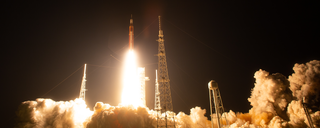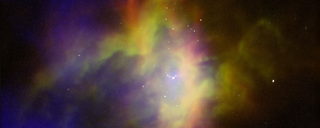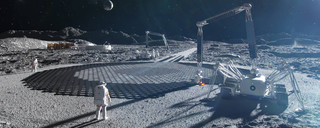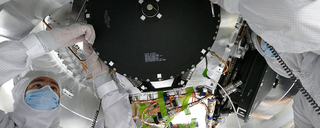A Weekly Summary of Top Content from Marshall, November 28 – December 2, 2022
Week of November 28 – December 2, 2022
Initial Assessment Shows Excellent Performance for Artemis Moon Rocket
The Space Launch System (SLS) rocket performed with precision, meeting or exceeding all expectations during its debut launch on Artemis I. The world’s most powerful rocket set NASA’s Orion spacecraft on course for a journey beyond the Moon and back, laying the foundation for the first mission with astronauts on Artemis II and humanity’s return to the lunar surface beginning with Artemis III.
Astronomers See Stellar Self-Control in Action
Astronomers have found that groups of stars in certain environments can regulate themselves. A new study has revealed stars in a cluster having “self-control,” meaning that they allow only a limited number of stars to grow before the biggest and brightest members expel most of the gas from the system.
NASA, ICON Advance Lunar Construction Technology for Moon Missions
As NASA plans for long-term human exploration of the Moon under Artemis, new technologies are required to meet the unique challenges of living and working on another world. NASA has awarded ICON, located in Austin, Texas, a contract to develop construction technologies that could help build infrastructure such as landing pads, habitats, and roads on the lunar surface.
Moon Microscope, Solar Arrays Launch on NASA’s SpaceX Cargo Ship
SpaceX’s 26th commercial resupply mission for NASA delivered 7,700 pounds of science experiments, crew supplies, and other cargo to the International Space Station this past weekend. Learn more about the contents of the launch, which included experiments exploring botany, biology, and physics.
NASA’s Europa Clipper Gets Its Wheels for Traveling in Deep Space
Just as NASA’s Mars rovers rely on robust wheels to roam the Red Planet and conduct science, some orbiters rely on wheels, too – in this case, reaction wheels – to stay pointed in the right direction. Engineers and technicians at NASA’s Jet Propulsion Laboratory in Southern California recently installed four reaction wheels on Europa Clipper, which will rely on them during its journey at Jupiter’s icy moon Europa.
For more information or to learn about other happenings at NASA’s Marshall Space Flight Center, visit NASA Marshall. For past issues of the ICYMI newsletter, click here.





























